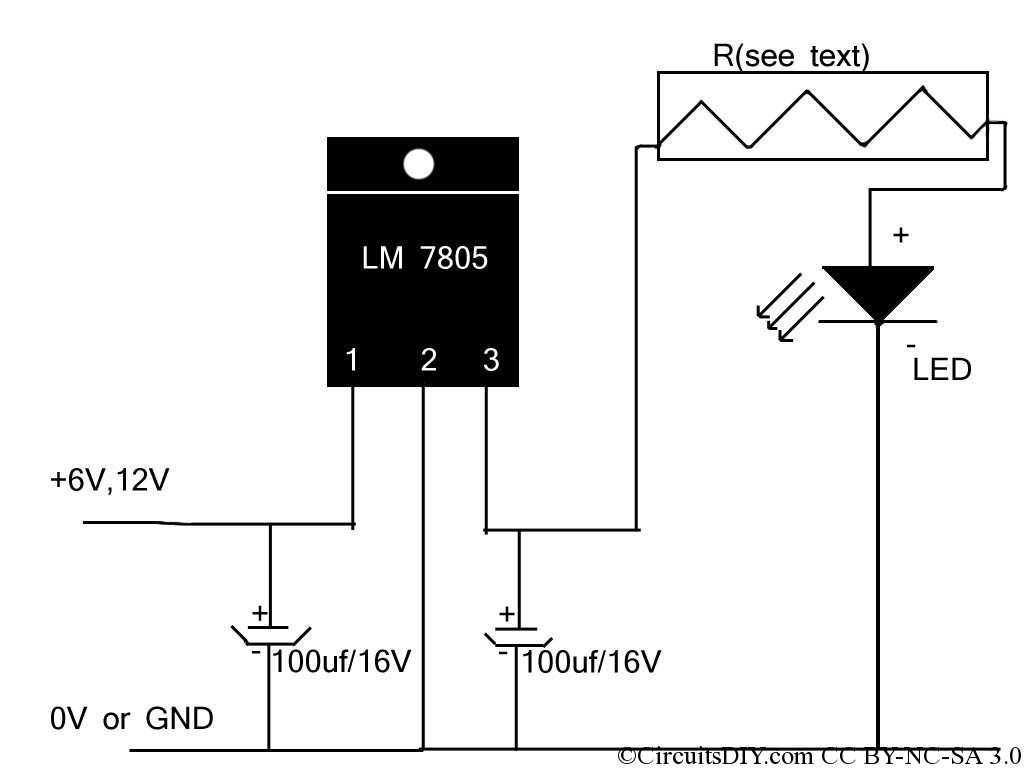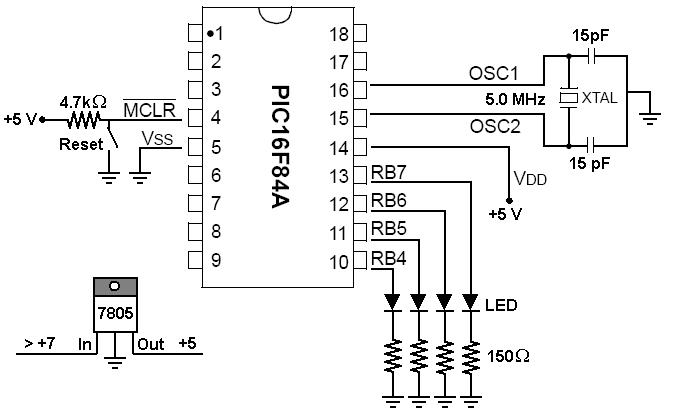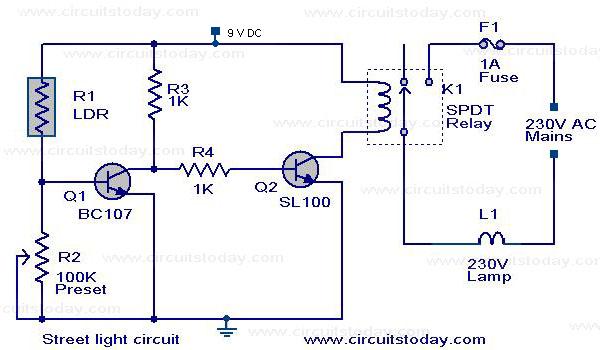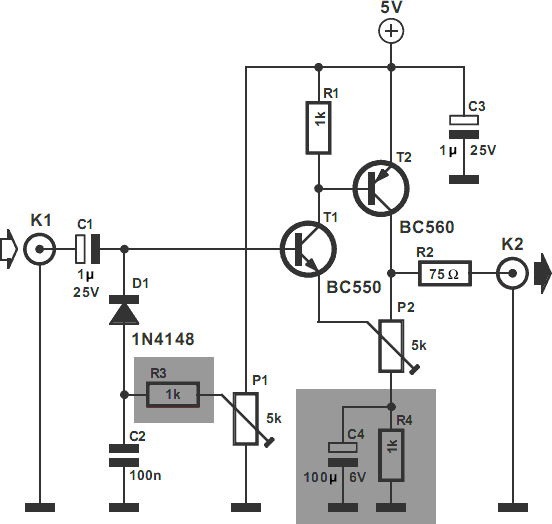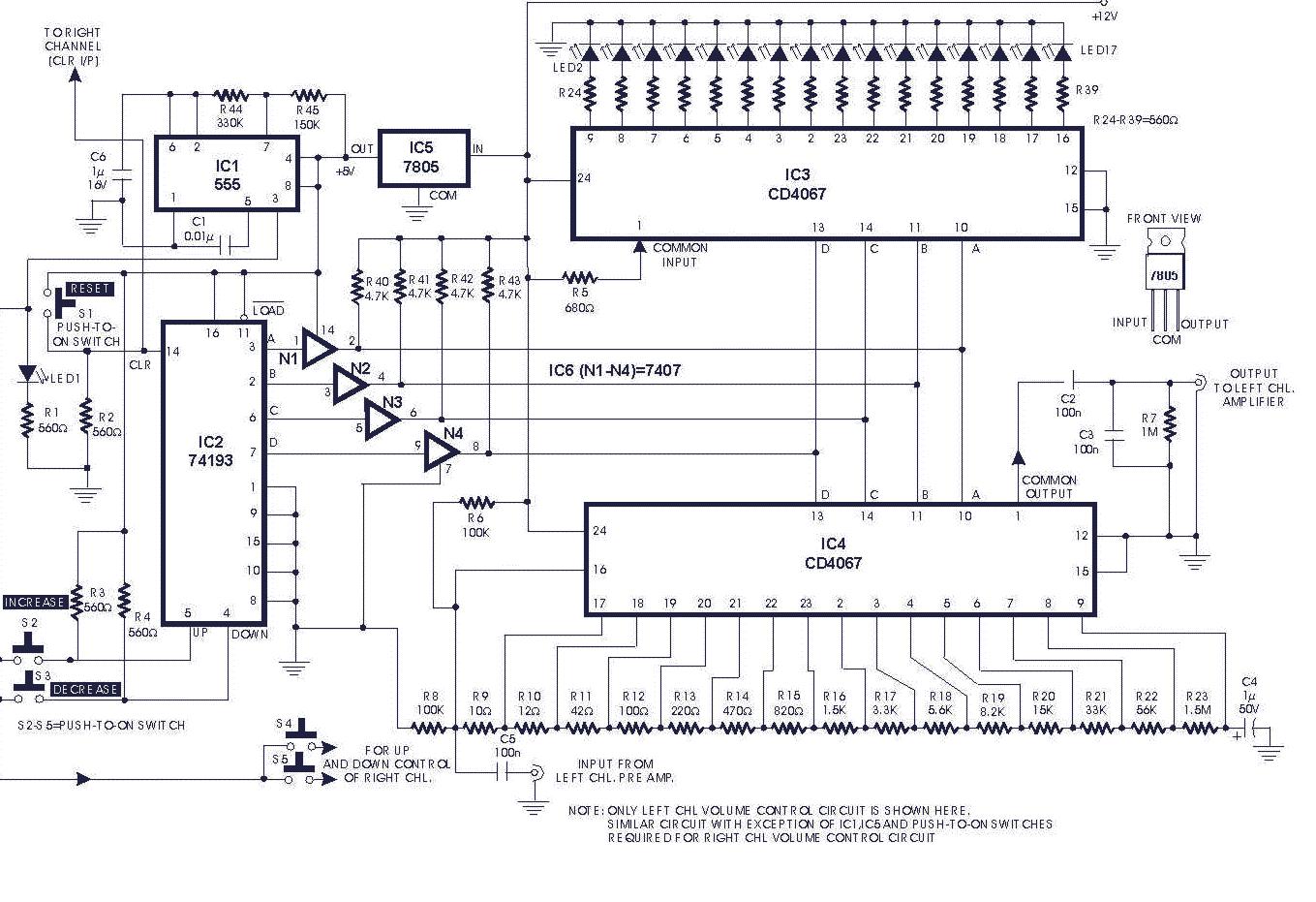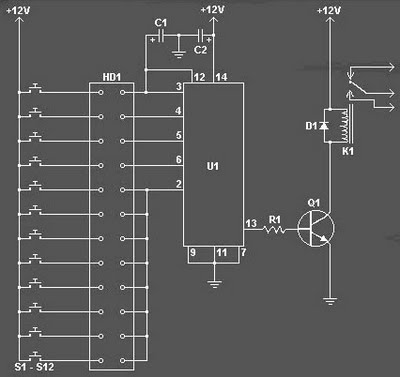
Timer Circuit with optocoupler
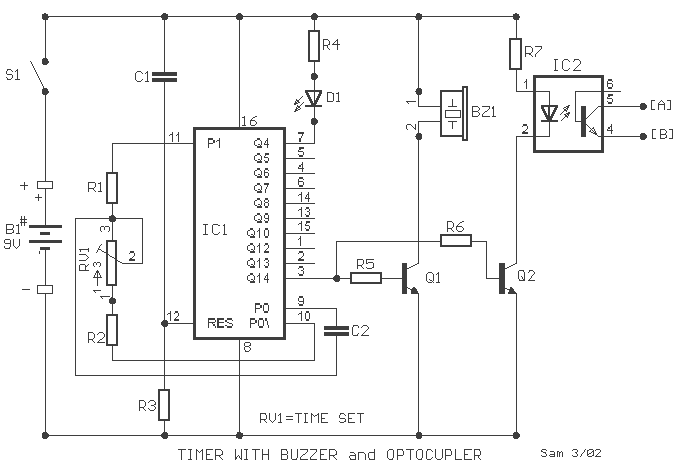
A small circuit that can find a lot of applications for measuring time. It has the capability to inform with a sound signal from the BZ1. At the same time, there exists the possibility to drive an external circuit via the optocoupler IC2, after connecting the applicable circuit to contacts [A] and [B]. The circuit is based on IC1 (4060), which includes an oscillator and a binary divider of 14 stages. The frequency of operation of the oscillator is determined by an R-C circuit connected to pins 9, 10, and 11 of IC1. The circuit is powered through switch S1, and a pulse is presented at pin 12 [RESET] via C1 and R3, resetting the counter, which is necessary for pulse measurement to begin from zero. When the count reaches the 14th digit, the output Q14 at pin 3 attains a high logic level. This voltage drives the base of transistors Q1 and Q2, turning them on, which activates the buzzer BZ1. Additionally, IC2 is prepared to drive any suitable external circuit via contacts [A] and [B]. The time delay is regulated with the potentiometer RV1, allowing for a delay ranging from 1 minute to 2 hours, proportionally determined by the combination of values of RV1 and C2. The circuit can be powered by a 9V battery or an external supply. LED D1 and resistor R4 can be omitted without affecting the circuit, as they simply indicate that the circuit is operational. The current requirement during the time count is minimal (approximately 1mA); however, when the output Q14 is activated, the current requirement increases proportionally to the components that are activated (D1, BZ1, IC1), reaching approximately 40mA.
TIME SET TABLE
RV1 C2 TIME
500K 220nF 1min-30min
500K 470nF 1min-60min
1M 470nF 1min-120min
Part List
R1=2.2MΩ C1=10nF 100V MKT IC1=4060
R2=18KΩ C2=220nF 100V MKT (see table) IC2=4N25
R3=1MΩ RV1=500KΩ pot. (see table) BZ1=buzzer
R4=1.2KΩ D1=LED RED B1=9V Battery or ext. pack supply
R5-6-7=1KΩ Q1-2=BC547 S1=ON-OFF mini Switch
The described circuit serves as a versatile timer with sound output and external control capabilities. The core of the circuit is the 4060 IC, which integrates an oscillator and a 14-stage binary divider. The oscillator's frequency is adjustable through a resistor-capacitor (R-C) network connected to specific pins, allowing for a range of timing applications.
The reset function is crucial for initiating the timing sequence, achieved by applying a pulse to the reset pin through the capacitor C1 and resistor R3. This ensures that every timing session starts from zero. The output Q14 signals the completion of the timing interval, activating the transistors Q1 and Q2, which in turn energize the buzzer BZ1 to provide an audible indication of the elapsed time. The optocoupler IC2 allows for the isolation and control of external circuits, enhancing the circuit's functionality in various applications.
The time delay can be finely tuned using the potentiometer RV1 in conjunction with the capacitor C2, as detailed in the provided time set table. This flexibility enables users to select timing intervals that suit their specific requirements, ranging from short durations to extended periods.
Power supply options include a 9V battery or an external power source, providing convenience for portable or stationary use. The LED D1 serves as a visual indicator of circuit operation, while its removal does not compromise the circuit's functionality. Current consumption during operation remains low, making this circuit efficient for prolonged use. However, care should be taken to account for increased current demands when the output is activated, ensuring that the power supply can accommodate the load. Overall, this circuit demonstrates a practical approach to time measurement and control in electronic applications.A small circuit that can find a lot applications of measurement time. She has the possibility us inform with sound signal from the BZ1. At the same time, exist the possibility drive a external circuit via the optocoupler IC2, after we connect the applicable circuit in contacts [ A ] and [ B ]. The circuit is based on IC1 (4060), which include in his inside, oscillator and a binary divider of 14 stage.
The frequency operation of oscillator is determined by a circuit R-C that connected in pins 9,10,11 of IC1. We give supply in the circuit, with switch S1, is presented a pulse in 12 [ RESET ] via C1 and R3, null him counter, require the measurement of pulses to begin from the zero.
Than the count get at in 14th digit then exit Q14 in the pin 3, acquire high logic level. This voltage drive the base the Q1-2, the transistors turn on, thus buzzer BZ1 sound, also the IC2 is ready to drive, via contacts [ A][B ], any suitable external circuit. The time delay is regulated with the potesometer RV1, in time delay that begin from 1 minute up to 2 hours, proportionally with the combination of prices that they will have the RV1 and C2.
[ see Table ]. The circuit can be supplied from a battery 9V or from external supply. Led D1 and R4, we can him cut out, they do not affect the circuit, simply us it show that the circuit work. The requirement in current when the circuit make time count, are not big (1mA roughly), with the D1 in circuit, on the contrary when activated output Q14, then the requirements in current boost, proportionally the materials that are activated [ D1, BZ1, IC1 ], reaching roughly 40mA..
TIME SET TABLE RV1 C2 TIME 500K 220nF 1min-30min 500K 470nF 1min-60min 1M 470nF 1min-120min Part List R1=2.2Mohm C1=10nF 100V MKT IC1=4060 R2=18Kohm C2=220nF 100V MKT (see table) IC2=4N25 R3=1Mohm RV1=500Kohm pot. (see table) BZ1=buzzer R4=1.2Kohm D1=LED RED B1=9V Battery or ext. pack supply R5-6-7=1Kohm Q1-2=BC547 S1=ON-OFF mini Switch 🔗 External reference
TIME SET TABLE
RV1 C2 TIME
500K 220nF 1min-30min
500K 470nF 1min-60min
1M 470nF 1min-120min
Part List
R1=2.2MΩ C1=10nF 100V MKT IC1=4060
R2=18KΩ C2=220nF 100V MKT (see table) IC2=4N25
R3=1MΩ RV1=500KΩ pot. (see table) BZ1=buzzer
R4=1.2KΩ D1=LED RED B1=9V Battery or ext. pack supply
R5-6-7=1KΩ Q1-2=BC547 S1=ON-OFF mini Switch
The described circuit serves as a versatile timer with sound output and external control capabilities. The core of the circuit is the 4060 IC, which integrates an oscillator and a 14-stage binary divider. The oscillator's frequency is adjustable through a resistor-capacitor (R-C) network connected to specific pins, allowing for a range of timing applications.
The reset function is crucial for initiating the timing sequence, achieved by applying a pulse to the reset pin through the capacitor C1 and resistor R3. This ensures that every timing session starts from zero. The output Q14 signals the completion of the timing interval, activating the transistors Q1 and Q2, which in turn energize the buzzer BZ1 to provide an audible indication of the elapsed time. The optocoupler IC2 allows for the isolation and control of external circuits, enhancing the circuit's functionality in various applications.
The time delay can be finely tuned using the potentiometer RV1 in conjunction with the capacitor C2, as detailed in the provided time set table. This flexibility enables users to select timing intervals that suit their specific requirements, ranging from short durations to extended periods.
Power supply options include a 9V battery or an external power source, providing convenience for portable or stationary use. The LED D1 serves as a visual indicator of circuit operation, while its removal does not compromise the circuit's functionality. Current consumption during operation remains low, making this circuit efficient for prolonged use. However, care should be taken to account for increased current demands when the output is activated, ensuring that the power supply can accommodate the load. Overall, this circuit demonstrates a practical approach to time measurement and control in electronic applications.A small circuit that can find a lot applications of measurement time. She has the possibility us inform with sound signal from the BZ1. At the same time, exist the possibility drive a external circuit via the optocoupler IC2, after we connect the applicable circuit in contacts [ A ] and [ B ]. The circuit is based on IC1 (4060), which include in his inside, oscillator and a binary divider of 14 stage.
The frequency operation of oscillator is determined by a circuit R-C that connected in pins 9,10,11 of IC1. We give supply in the circuit, with switch S1, is presented a pulse in 12 [ RESET ] via C1 and R3, null him counter, require the measurement of pulses to begin from the zero.
Than the count get at in 14th digit then exit Q14 in the pin 3, acquire high logic level. This voltage drive the base the Q1-2, the transistors turn on, thus buzzer BZ1 sound, also the IC2 is ready to drive, via contacts [ A][B ], any suitable external circuit. The time delay is regulated with the potesometer RV1, in time delay that begin from 1 minute up to 2 hours, proportionally with the combination of prices that they will have the RV1 and C2.
[ see Table ]. The circuit can be supplied from a battery 9V or from external supply. Led D1 and R4, we can him cut out, they do not affect the circuit, simply us it show that the circuit work. The requirement in current when the circuit make time count, are not big (1mA roughly), with the D1 in circuit, on the contrary when activated output Q14, then the requirements in current boost, proportionally the materials that are activated [ D1, BZ1, IC1 ], reaching roughly 40mA..
TIME SET TABLE RV1 C2 TIME 500K 220nF 1min-30min 500K 470nF 1min-60min 1M 470nF 1min-120min Part List R1=2.2Mohm C1=10nF 100V MKT IC1=4060 R2=18Kohm C2=220nF 100V MKT (see table) IC2=4N25 R3=1Mohm RV1=500Kohm pot. (see table) BZ1=buzzer R4=1.2Kohm D1=LED RED B1=9V Battery or ext. pack supply R5-6-7=1Kohm Q1-2=BC547 S1=ON-OFF mini Switch 🔗 External reference
